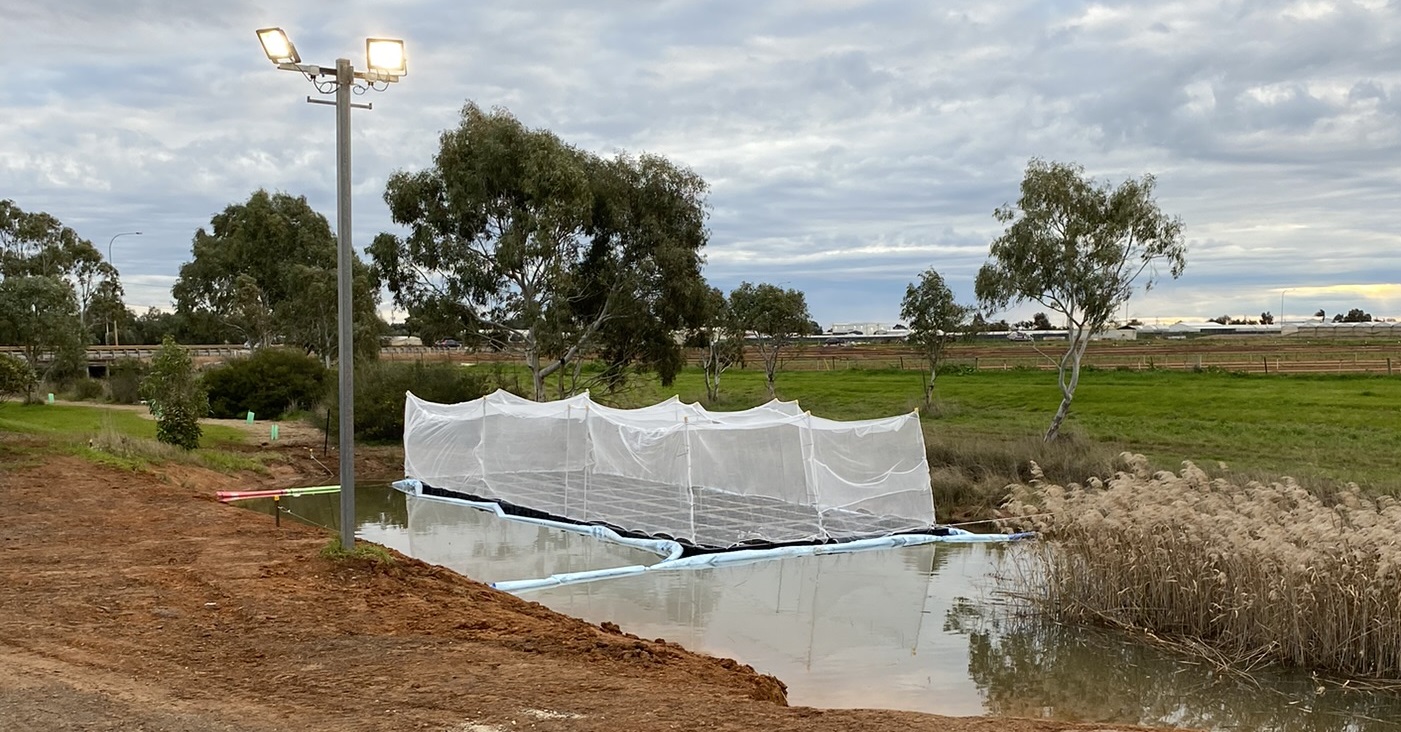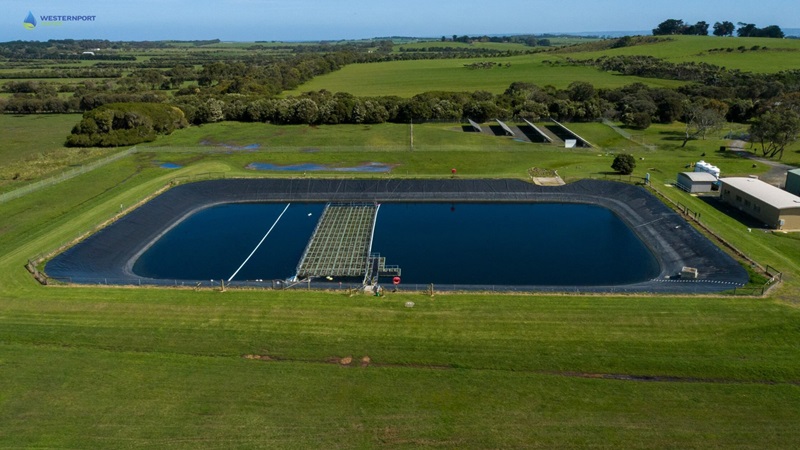Constructed floating wetlands (CFWs)
CFWs are a recent innovation for both stormwater and wastewater treatment. Similar to a hydroponic system, the roots of native plants grow into the water under the floating modules. They mimic the appearance of natural floating islands but are enhanced with the advantages of a wetland system's biological and biogeochemical processes. The large surface area of plant roots also provide habitat for microorganisms (biofilms) which facilitate contaminant removal and capture of suspended particles within the water source. As they float on the water surface, CFWs can be retrofitted into existing waterbodies without impacting flood storage capacity.
Other benefits include
- Improve water quality and reduce nutrients and other organic pollutants levels that accumulate in plant tissues.
- Provide data to enable water sector managers to reactivate these water bodies for their full intended use.
- Social benefits such as improving landscape aesthetics.

Current projects
We have two current and collaborative projects utilising constructed floating wetlands.

There is a pilot study on Phillip Island in the Gippsland region of Victoria with Westernport Water. This project installed a floating wetlands system on a wastewater lagoon at Cowes Wastewater Treatment Plant (pictured above). This two-year study uses the wetland plants to remove nutrients and reduce greenhouse gas emissions from treated wastewater. The project is a joint initiative between Westernport Water, Deakin University, Clarity Aquatic, Covey Associates and CSIRO with funding from the Victorian Government, Intelligent Water Networks and Yarra Valley Water.
We are also leading a three-year field research study to develop an innovative approach for long term management of urban water bodies in South Australia. The study is the first of its kind to assess the feasibility of ongoing contaminants removal in urban runoff using Australian native plant species and natural soil improvers such as biochar and granular activated carbon. The study will initially use modular CFWs to facilitate soil and plant evaluation and testing. The project involves the installation of CFWs on an urban stormwater stream channel in Salisbury, South Australia. The subsequent management of plant and sorbent material will also be addressed. Our outcomes will be shared with the broader water sector and the local community throughout the project, with community open days planned. This project is a joint initiative between Salisbury Water, University of South Australia, Bygen, Clarity Aquatic, Covey Associates and CSIRO with R&D funding from Salisbury Water.
Constructed floating wetlands (CFWs)
CFWs are a recent innovation for both stormwater and wastewater treatment. Similar to a hydroponic system, the roots of native plants grow into the water under the floating modules. They mimic the appearance of natural floating islands but are enhanced with the advantages of a wetland system's biological and biogeochemical processes. The large surface area of plant roots also provide habitat for microorganisms (biofilms) which facilitate contaminant removal and capture of suspended particles within the water source. As they float on the water surface, CFWs can be retrofitted into existing waterbodies without impacting flood storage capacity.
Other benefits include
- Improve water quality and reduce nutrients and other organic pollutants levels that accumulate in plant tissues.
- Provide data to enable water sector managers to reactivate these water bodies for their full intended use.
- Social benefits such as improving landscape aesthetics.

Current projects
We have two current and collaborative projects utilising constructed floating wetlands.
There is a pilot study on Phillip Island in the Gippsland region of Victoria with Westernport Water. This project installed a floating wetlands system on a wastewater lagoon at Cowes Wastewater Treatment Plant PDF (3 MB)(pictured above). This two-year study uses the wetland plants to remove nutrients and reduce greenhouse gas emissions from treated wastewater. The project is a joint initiative between Westernport Water, Deakin University, Clarity Aquatic, Covey Associates and CSIRO with funding from the Victorian Government, Intelligent Water Networks and Yarra Valley Water.
We are also leading a three-year field research study to develop an innovative approach for long term management of urban water bodies in South Australia. The study is the first of its kind to assess the feasibility of ongoing contaminants removal in urban runoff using Australian native plant species and natural soil improvers such as biochar and granular activated carbon. The study will initially use modular CFWs to facilitate soil and plant evaluation and testing. The project involves the installation of CFWs on an urban stormwater stream channel in Salisbury, South Australia. The subsequent management of plant and sorbent material will also be addressed. Our outcomes will be shared with the broader water sector and the local community throughout the project, with community open days planned. This project is a joint initiative between Salisbury Water, University of South Australia, Bygen, Clarity Aquatic, Covey Associates and CSIRO with R&D funding from Salisbury Water.
